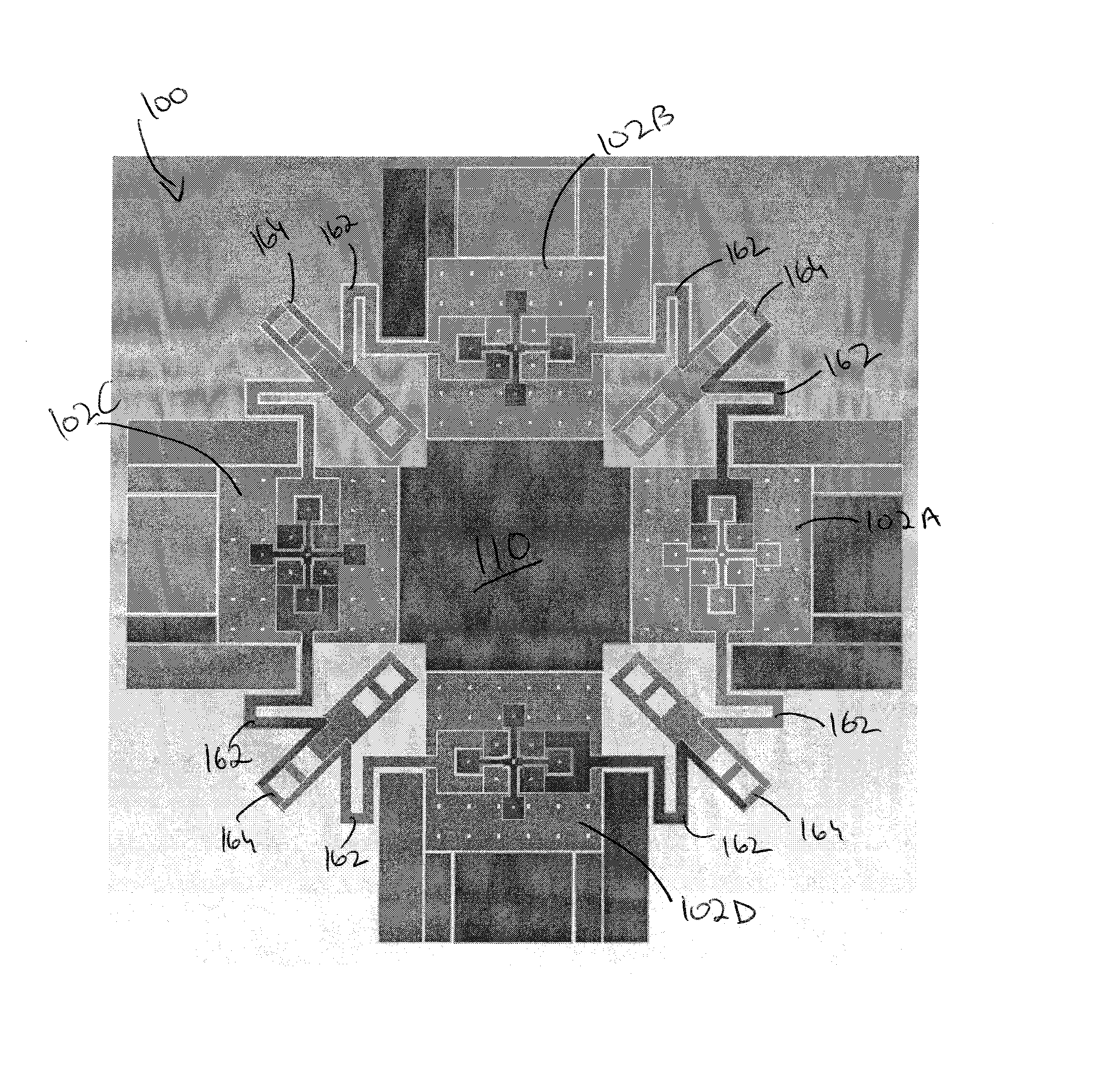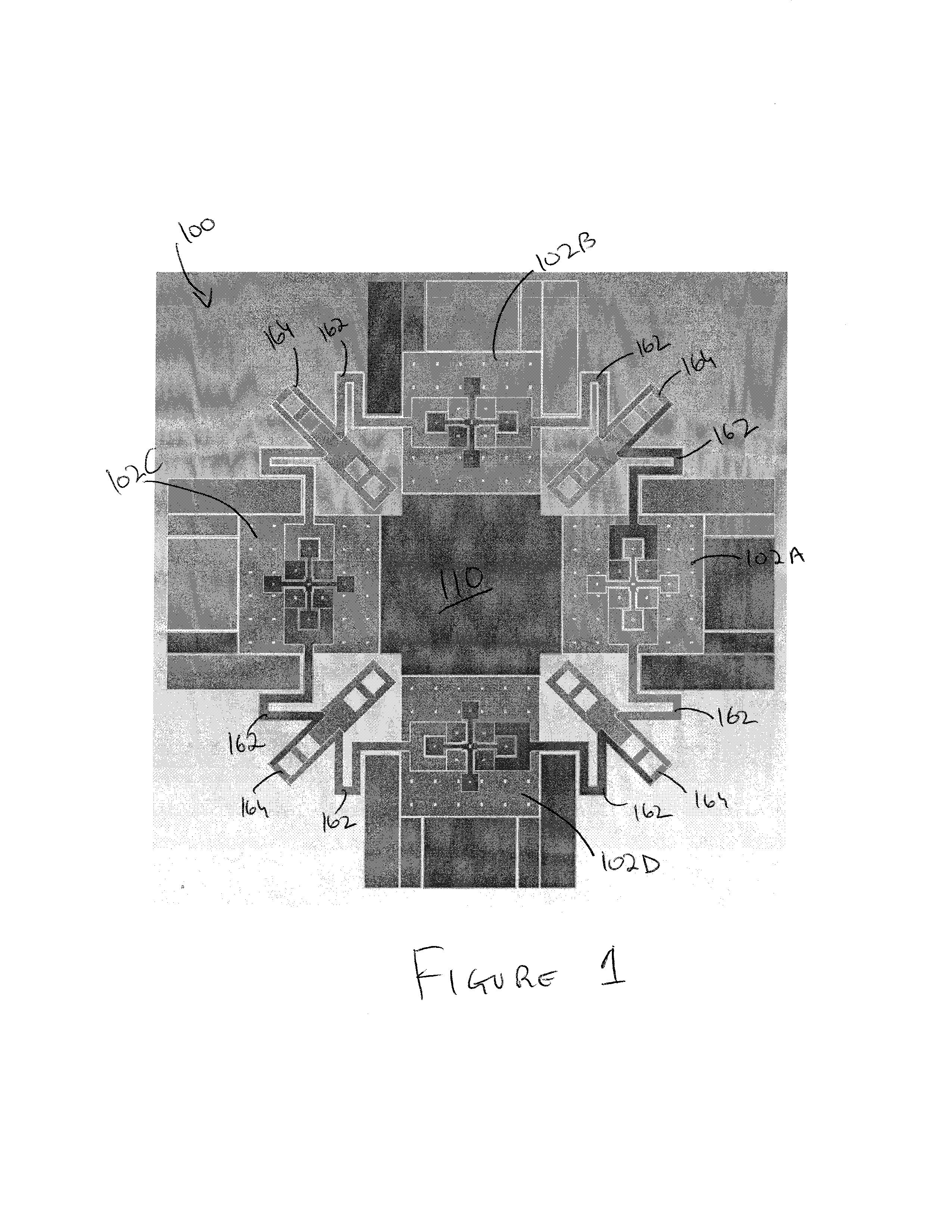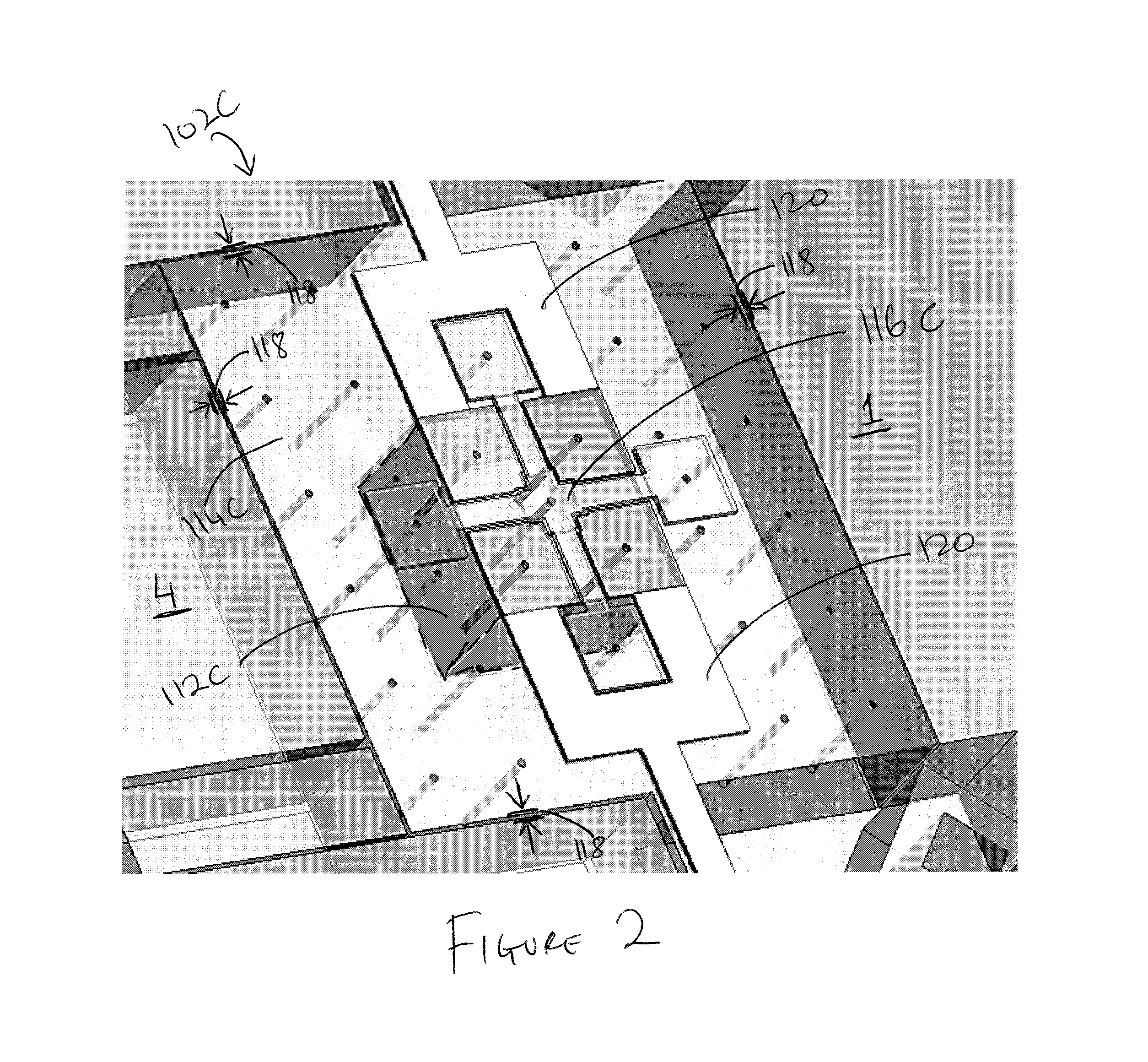Vibratory tuning fork based six-degrees of freedom inertial measurement MEMS device
a technology of inertial measurement and vibration tuning forks, which is applied in the direction of acceleration measurement using interia forces, turn-sensitive devices, instruments, etc., can solve the problems of inability to sensing rotational and translational motion simultaneously around all three axes, their cost, size and power requirements limit their use in a wider range of industries, and achieve the effect of facilitating the release of the devi
- Summary
- Abstract
- Description
- Claims
- Application Information
AI Technical Summary
Benefits of technology
Problems solved by technology
Method used
Image
Examples
Embodiment Construction
[0022]Technologies herein are directed towards sensing rotation and acceleration around all three axes of free space using an inertial measurement MEMS device. Such devices will have to have at least six degrees of freedom in their mechanical design to be able to sense six independent motion signals, i.e. linear acceleration along and angular velocity signals around three orthogonal axes of free space. In particular, the mechanism for sensing rotation rate is similar to a mode-matched vibratory tuning fork gyroscope in that the proof masses of the inertial measurement MEMS device each vibrate along a single axis (known as the drive mode) and if the MEMS device experiences rotation along another axis, the proof masses start vibrating along a third axis (known as the sense mode) due to the Coriolis force. Under mode-matched condition, the sense mode is designed to have the same, or nearly the same, resonance frequency as the drive mode. Hence, the rotation induced Coriolis signal is a...
PUM
 Login to View More
Login to View More Abstract
Description
Claims
Application Information
 Login to View More
Login to View More - R&D
- Intellectual Property
- Life Sciences
- Materials
- Tech Scout
- Unparalleled Data Quality
- Higher Quality Content
- 60% Fewer Hallucinations
Browse by: Latest US Patents, China's latest patents, Technical Efficacy Thesaurus, Application Domain, Technology Topic, Popular Technical Reports.
© 2025 PatSnap. All rights reserved.Legal|Privacy policy|Modern Slavery Act Transparency Statement|Sitemap|About US| Contact US: help@patsnap.com



